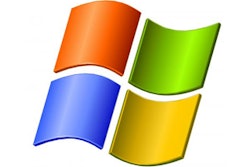Most can agree that Cloud ERP, and certainly MFG Cloud ERP, is in its infancy. Interestingly, while analysts project that the adoption rate for Cloud HR is over 60 percent and for Cloud CRM over 75 percent, the present adoption rate of Cloud ERP for manufacturers is less than ten percent (versus 90 percent of On Premise ERP). Yet, there is a general consensus that, by 2023, most of the installed MFG ERP systems will be Cloud-based.
Nonetheless, today, On Premise ERP remains king of the installed base, even though many of these systems are ten, 20 and 30 years old – ancient in the world of software applications. So, with the knowledge of the benefits of Cloud ERP, which include reduced IT operational costs by outsourcing hardware and software maintenance and support to the cloud provider among others, what is causing MFG Cloud ERP to presently trail in the market?
One major obstacle is that the larger ERP vendors, especially those investing big marketing dollars, are On Premise providers who continue to focus on their On Premise systems, even if they could offer a Cloud ERP solution. The second obstacle is that end users with On Premise systems are not being quick to replace them. Either they are trying to wring a little more ROI out of their former investment or, remembering the implementation frustrations of their present On Premise suite, don’t want to change regardless of Cloud ERP benefits. However, industry analysts report that an increasing number of companies in the market for a replacement ERP will consider a Cloud solution. Two years ago, it was estimated that 25 percent would consider a Cloud solution; today, that estimate has grown to 40 percent.
Who Is Implementing Cloud ERP Now?
Cloud ERP is presently being embraced by three different types of organizations. The first are new, emerging businesses that have never had an On Premise system and want to immediately harness the benefits of Cloud ERP. Astrum Solar, a full-service residential solar provider headquartered in Annapolis Junction, Md., is such a company.
“Astrum Solar’s rapid expansion facilitated our requirement for a solution that could interweave the ever-changing environment of the solar industry with the rapid development in our company,” said Vadim Polikov, president and chief executive officer of Astrum Solar. “We chose (Cloud ERP) … because (it will) enable our organization to sustain our flexibility and commitment to the customer as we continue to grow our business and spread solar power to roofs across the country.”
The second customer group is those smaller plants of larger corporations that never successfully implemented the larger On Premise solution installed at corporate.
EBARA International, a Japanese world leader in the engineering and production of specialized cryogenic liquefied gas pumps and turbine expanders, is typical. Frank Lowery, director of IT, EBARA International, has a very functional On Premise system but knows that the Cloud is the wave of the future and EBARA can invest in expanded capability at a reduced cost with it.
“EBARA needed to move away from the closed and rigid processes of legacy ERP to the very flexible and open work-flows possible (with Cloud ERP)” said Lowery. “(We needed a) cloud platform that (could) support our complex, project-oriented, engineer-to-order manufacturing environment today.”
The third group investing in Cloud ERP is comprised of companies that are truly experiencing an end of life of their On Premise ERP systems, companies like Oclaro (formerly Xtellus), a leading San Jose, Calif.-based supplier of scalable Wavelength Selective Switches (WSS) for reconfigurable optical networks. Oclaro was experiencing rapid growth and could no longer afford to depend on disparate systems, one for accounting and the other for manufacturing.
Given their Oclaro’s expansions into a global multi-facility manufacturing and engineering operation, they required an integrated manufacturing, planning, sales, accounting, purchasing, inventory and shop floor control ERP system with both standard cost and project cost capabilities. Oclaro also wanted a contemporary, SaaS (Software as a Service) ERP system which insured that they could minimize their investment in an IT infrastructure – as well as be confident that they could enjoy on-demand access to the system across multiple facilities located around the world at any time to support their growing business.
Many On Premise ERP Users Staying Put – For Now
There are a number of ERP suppliers that were developed 20 and 30 years ago that are installed and still effectively running today. In addition, there are ERP vendors that are continuing to profitably reap software maintenance fees from these systems, keeping a small support development crew to maintain these systems, at least for a few more years.
As a result, when considering replacing On Premise ERP with Cloud ERP, one must take the longer view. Massive investments similar to the Y2K challenge that spurred spending on ERP systems in the late 90’s will not happen presently with Cloud ERP. Even though there are many benefits from a Cloud ERP solution over that of an On Premise system, the eventual replacement of On Premise systems will take time.
While the adoption rate for Cloud ERP solutions increases year by year and while new system buys are predominantly falling to Cloud ERP vendors, the replacement of On Premise ERP (especially MFG Cloud ERP) has not yet reached the tipping point and will not do so for several years. Once, though, present On Premise ERP software maintenance practitioners either retire or leave for better job opportunities, the momentum will switch to Cloud ERP among present On Premise ERP users as well. As a result, within ten years, the majority of ERP investments will be in Cloud ERP.
ABOUT THE AUTHOR: Pat Garrehy is the Founder, President, and CEO for Rootstock Software® and has an extensive background as a software architect and engineer. With over 30 years of management, sales and technical experience, Mr. Garrehy brings a unique blend of analytical focus and business savvy to the table.
Mr. Garrehy is also the founder and former CEO of Relevant Business Systems, a client-server ERP software provider with an exclusive focus on discrete manufacturing companies. Relevant, which was sold in 2006, remains the most profitable division of the acquirer to date. As a University of California at Berkeley graduate, he holds a BS degree in business and mathematics as well as a MBA in finance from the University of Southern California.






















